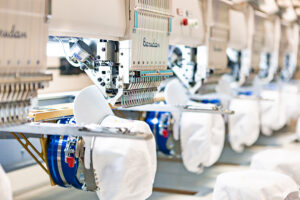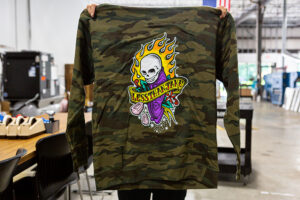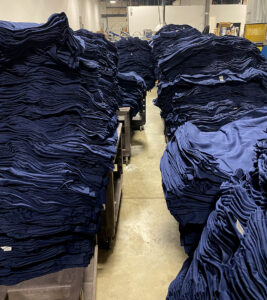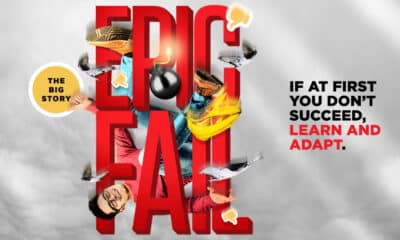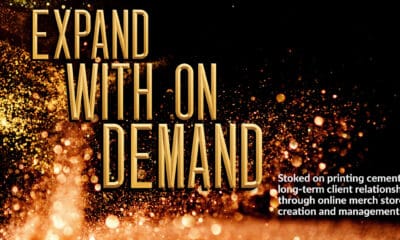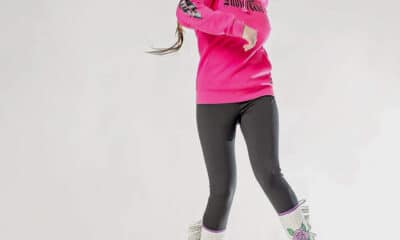PETER FERTIGUENA AND HIS brother Robb founded Topdeck Apparel & Promotions in North Haven, Connecticut, in 2019. Peter runs the sales and business development side of the company and has been in the industry for close to 15 years. “Like a lot of printers, we started out of a basement with a manual press and have made every mistake in the book,” he says. “We now fortunately get to produce official merchandise for your favorite band, brand, or corporation.” Topdeck is a full-service merchandise production company offering in-house screen printing, embroidery, promotional sourcing, and retail finishing services. They specialize in printing licensed apparel. Currently, their largest licensed customers are in the music industry, producing products for tours, ecommerce, and brick-and-mortar retail outlets.
Q: What are your tips for other screen printers who want to get into licensing?
Peter Fertiguena: Printing licensed apparel is a very competitive, price-driven market, but it’s high volume and can be a great way to balance your business and keep those presses running.
To simplify it, there are two paths you could ultimately go down and each comes with their own set of challenges. Both require your business to be very operationally sound; there are many moving parts and stringent guidelines that need to be executed and documented.
The first is purchasing the license yourself, which usually involves paying an upfront guaranteed fee and then royalties on every piece sold. In this scenario, you would need to have established sales channels or develop them for every product to make it worth it.
The second is connecting with agencies, retailers, and distributors that own the licenses and becoming a trusted partner that’s just doing the production. Although this reduces your financial risk, it usually comes with less control and lower margins. To become a production partner, you usually need to go through rigorous quality print tests and sampling, agree to established pricing, and work on tighter deadlines.
Advertisement
We have a mixture of the two options. We hold and manage some licenses ourselves but also have agency clients that have hundreds of licenses in the music, sports, and collegiate markets.
Q: Some screen printers create their own designs to avoid paying licensing fees. Thoughts?
PF: Licensing usually applies to broad copyrighted brand marks, logos, and intellectual property, not so much on a per design basis. If you’re designing something that can still be confused with the original trademark, you’re probably walking a thin legal line.
Q: Are there any prohibited uses you run into?
PF: Great question. Yes, every brand has their own set of regulations and guidelines. For example, there’s a stark difference between working with the music industry and university clients. As you can imagine, college logos and marks are much stricter with what types of products they’re associated with, designs, and even where the blank goods are produced. Each has larger managing entities (licensing agencies) that look after their brands and “protect the shield.” Every design and garment must be approved before going to production.
Q: What’s a typical price you pay per item for licensing? What percentage do you add to the cost for the customer?
Advertisement
PF: It really varies depending on the terms of the deal. What I will tell you is for the licenses we do hold, the royalty rates can range anywhere from 5 percent to upwards of 20 percent per piece sold. That ultimately must be built into the pricing, and unfortunately gets passed onto the end customer. People often wonder why concert or licensed sports apparel costs so much, and I try to explain the value is in the intellectual property not so much the cost of goods or production. There’s a tremendous amount of hands in developing, managing, and selling of official branded merchandise. Starting with the owner of the trademark, the agency, the creative process all the way through distributing it and selling it. All of that has to be paid for somehow and everyone is getting a percentage of the sale.
Q: Have you ever run into any legal issues (that you can talk about)?
Peter Fertiguena: Yes, we have run into a few situations over the years. We try to be proactive and if we see something we think could be an issue we are pretty upfront and try our best to educate the client on the reasons why we won’t print it. In my experience, it usually happens with smaller clients that are using copyrighted images they found on the web somewhere that we’re not aware of. We don’t do a ton of creative design, so ultimately the responsibility falls on our clients if they’re providing the artwork. They’re usually sent a cease and desist and have to settle in some way with the owner of the trademark.
PHOTO GALLERY (6 IMAGES)
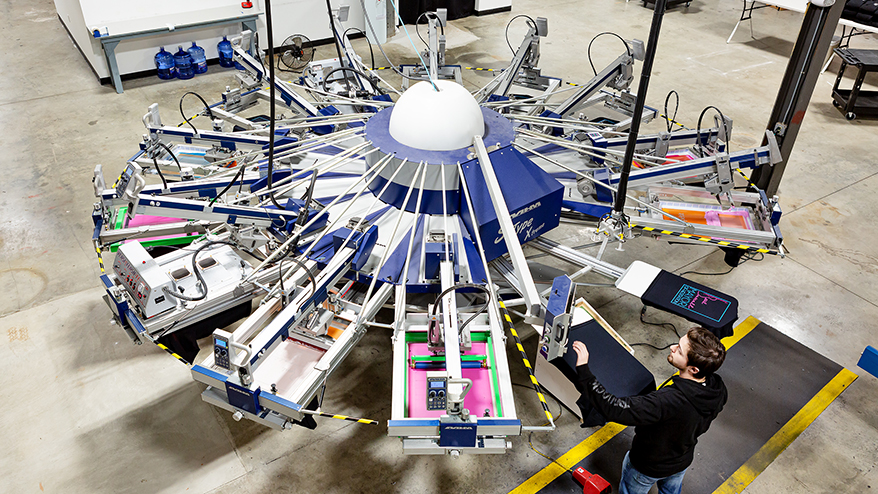

 Case Studies2 months ago
Case Studies2 months ago
 Art, Ad, or Alchemy2 months ago
Art, Ad, or Alchemy2 months ago
 Andy MacDougall2 months ago
Andy MacDougall2 months ago
 Columns3 weeks ago
Columns3 weeks ago
 Editor's Note3 weeks ago
Editor's Note3 weeks ago
 Marshall Atkinson3 weeks ago
Marshall Atkinson3 weeks ago
 Thomas Trimingham2 months ago
Thomas Trimingham2 months ago
 News & Trends2 months ago
News & Trends2 months ago
